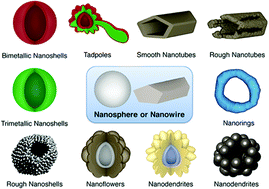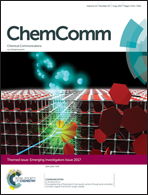Galvanic replacement reaction: recent developments for engineering metal nanostructures towards catalytic applications
Abstract
Metallic nanoparticles have been extensively studied towards applications in catalysis. Among the several methods for their controlled synthesis, galvanic replacement is particularly attractive as it enables the production of bimetallic and hollow nanomaterials displaying ultrathin walls in a single reaction step. This procedure is versatile, but final morphologies are often limited to shapes that represent the hollow analogues of the starting template nanocrystals. For catalytic applications, it is highly desirable to broaden the scope of physicochemical control that can be achieved by this method. This feature article discusses recent strategies developed in our group for the synthesis of hollow bimetallic nanomaterials by galvanic replacement that enable a further level of control over surface morphologies and composition. We begin by briefly explaining the fundamentals of the conventional galvanic replacement reaction between Ag and AuCl4−. This is one of the most characteristic galvanic replacement reactions, and it can be tuned to create a huge variety of nanoparticle morphologies. We will discuss how advanced electron microscopy characterization enables us to uncover surface-segregation behavior as a function of compositions, and relate this to the detected catalytic performance. We will also discuss how galvanic replacement can be extended to trimetallic compositions, leading to improvements in catalytic activities compared to mono or bimetallic counterparts. Furthermore, we will show how surface morphology, size, and anisotropic growth can be controlled by tuning the temperature during the synthesis and by combining galvanic replacement reaction with co-reduction. Finally, we will demonstrate how these approaches are promising for large-scale synthesis of controlled hollow nanostructures and their incorporation into supports to produce catalysts at the gram-scale. We believe the developments described herein shed important insights and may inspire the development of sophisticated and controlled nanomaterials at relatively larger scales for catalytic applications.

- This article is part of the themed collections: SBQ-RSC: Celebrating UK-Brazil collaborations and 2017 Emerging Investigators


 Please wait while we load your content...
Please wait while we load your content...